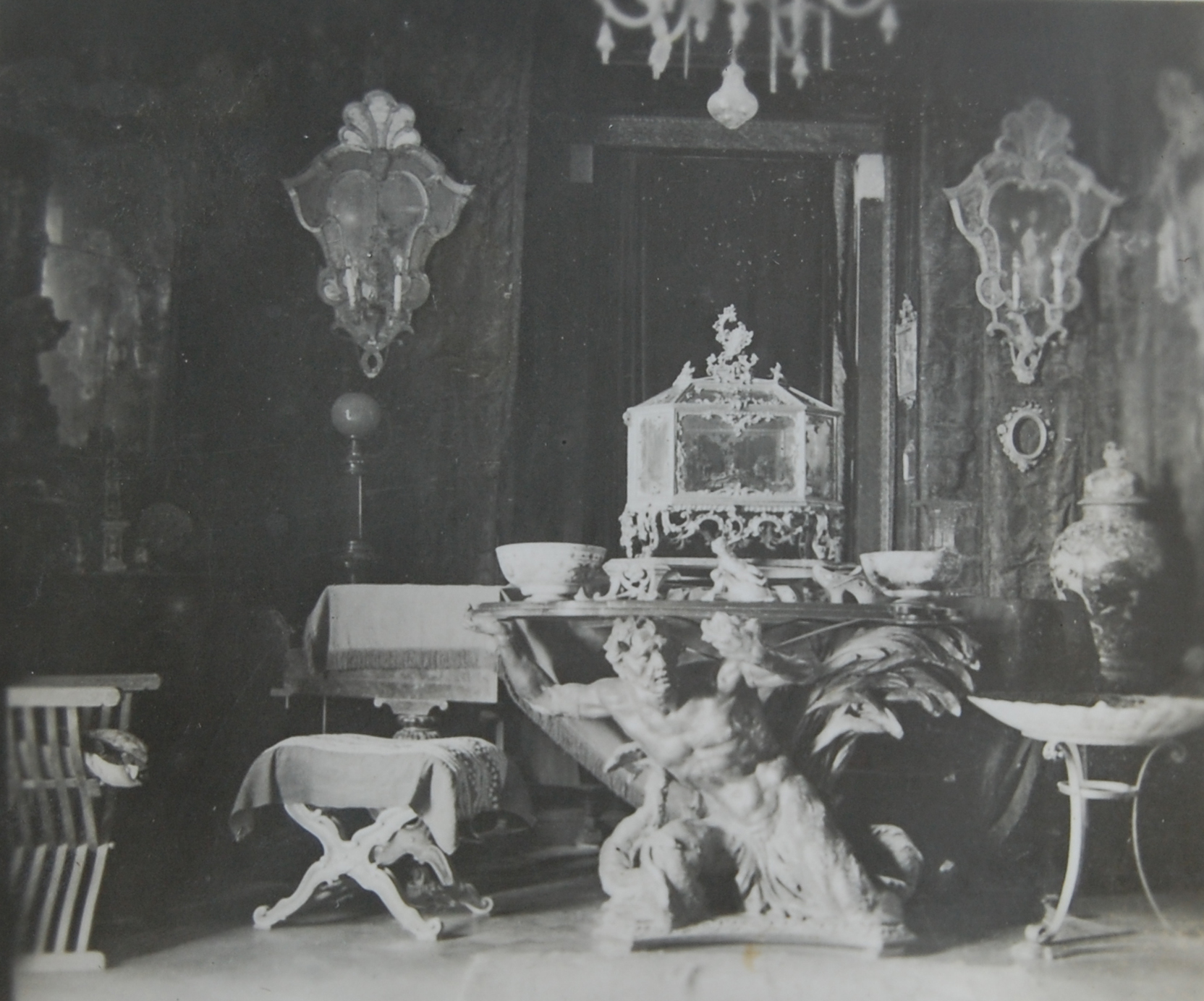The detachable silver tray by Champenois, French, circa 1860
The tray stamped with French hallmarks by Champenois
Provenance
The collection of a noble family, Italy
Pogliaghi established long term relationships with some of the most important patrons in northern Italy. It was for these patrons which he planned entire interiors. The present centre table, Pogliaghi’s chef-d’oeuvre, exemplifies his innovative design and attention to detail. Here the triton appears among shells and bulrushes about to surge forth from the glittering water. His fingers just breaking the “surface” of the Rococo-style silver tray with its sinuous edge. The theatrical effect is made all the more striking for its formidable scale. Not limiting himself to the Renaissance revival or Neo-Gothic styles, he drew together Romantic and Renaissance influences with an Art Nouveau freedom of form. Interestingly, a recently discovered photograph of a plaster model for the Villa Pirotta at Brunate, Como (Pogliaghi worked at the private residence of Villa Pirotta at Brunate, Como in 1902), was discovered together with a handwritten note by Pogliaghi to Mr. Barigozzi, dated 9 March 1916, ‘Dear Mr. Barigozzi, I need the plaster model of the Triton which was made for Mr Pirotta. It has no more arms, which probably are in my atelier. I ask you if you can bring it to Brothers’ Rigola atelier, Mazzini Street n.6. It’s a long time I can’t hear from you. Are you working very hard? Maybe yes, but on other artistic projects. Greetings, your L. Pogliaghi’.
Significantly an identical large silver tray appears in the photograph. It is unclear whether this tray is the tray on the present model or if a duplicate was made. It is also possible that the centre table and silver tray represented a working model for the present table. Another example, possibly the original working model, in bronze painted plaster supporting a marble top was displayed in Pogliaghi’s own home, such was his affection for the work. His home has been preserved as a museum dedicated to his work in Varese.
Careful consideration was taken with the cleaning of this work which has revealed rich silver details in the eyes and gilding on the base.














